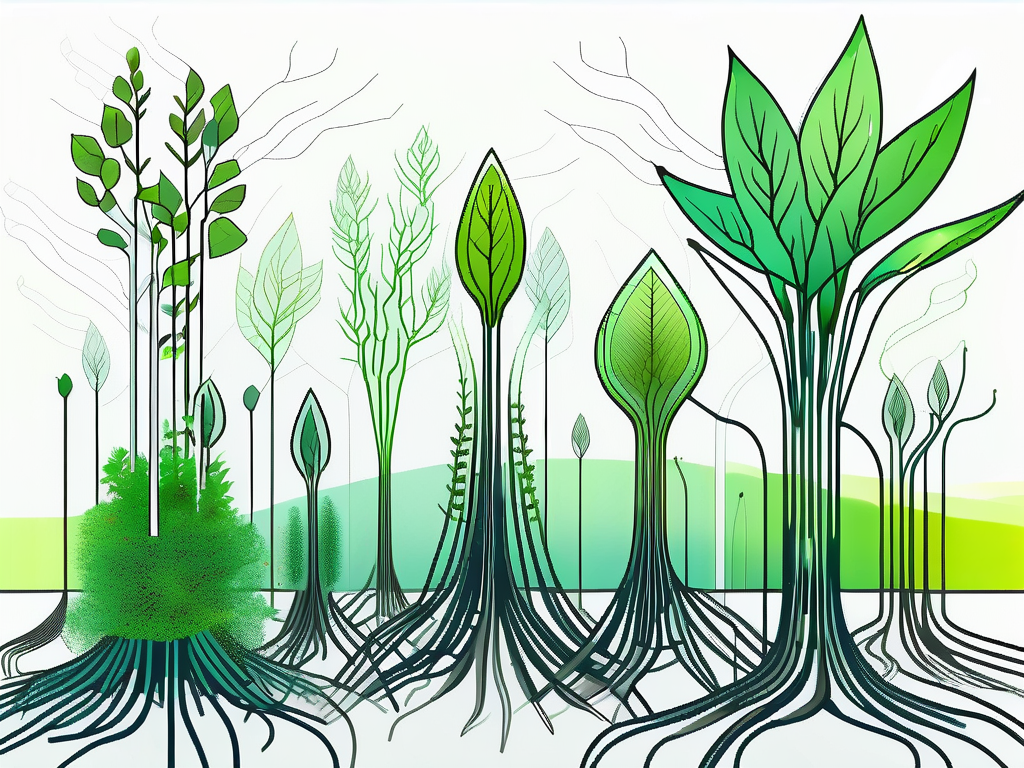
Phytoremediation: Wastewater Treatment Explained
Phytoremediation is a bioremediation process that uses various types of plants to remove, transfer, stabilize, and/or destroy contaminants in the soil and groundwater. This innovative and environmentally friendly method of cleaning up contaminated sites, often used in the field of wastewater treatment, has gained considerable attention in recent years due to its cost-effectiveness and sustainability.
Phytoremediation is a complex process that involves a multitude of biological, chemical, and physical interactions between plants, soil, and contaminants. It is a promising solution to the problem of wastewater treatment, offering a sustainable alternative to traditional methods that often involve the use of harmful chemicals or energy-intensive processes.
Understanding Phytoremediation
Phytoremediation is based on the natural abilities of certain plants to take up, store, and metabolize various contaminants in their tissues. These plants, known as hyperaccumulators, have developed this ability as a survival strategy in environments with high levels of contaminants. They can accumulate and tolerate extraordinarily high concentrations of contaminants, which would be toxic or even lethal to other plant species.
The process of phytoremediation can be categorized into several types, depending on the nature of the contaminants and the mechanisms involved in their removal. These include phytoextraction, phytodegradation, phytostabilization, phytovolatilization, and rhizofiltration.
Phytoextraction
Phytoextraction, also known as phytoaccumulation, involves the uptake of contaminants from the soil or water by plant roots, which then translocate the contaminants to the above-ground parts of the plant. This method is particularly effective for removing heavy metals and radionuclides from contaminated sites.
The effectiveness of phytoextraction depends on several factors, including the type of plant used, the nature and concentration of the contaminants, and the characteristics of the soil or water. Certain plants, such as sunflowers and Indian mustard, have been found to be particularly effective at phytoextraction of heavy metals.
Phytodegradation
Phytodegradation, also known as phytotransformation, involves the breakdown of contaminants within plant tissues. This process is facilitated by enzymes produced by the plant, which can metabolize the contaminants into less harmful substances. Phytodegradation is particularly effective for the removal of organic contaminants, such as petroleum hydrocarbons and pesticides.
The effectiveness of phytodegradation depends on the ability of the plant to metabolize the specific contaminant. Certain plants, such as poplars and willows, have been found to be particularly effective at phytodegradation of organic contaminants.
Phytoremediation in Wastewater Treatment
Phytoremediation has been increasingly used in the field of wastewater treatment due to its cost-effectiveness and environmental friendliness. It offers a sustainable solution to the problem of wastewater treatment, particularly in developing countries where resources for conventional wastewater treatment methods are often limited.
Phytoremediation can be used to treat a wide range of contaminants commonly found in wastewater, including heavy metals, organic pollutants, nutrients, and pathogens. The process can be carried out in constructed wetlands, which are engineered systems designed to mimic the natural processes of wetlands for the purpose of wastewater treatment.
Constructed Wetlands
Constructed wetlands are engineered systems that use natural processes involving wetland vegetation, soils, and their associated microbial assemblages to improve water quality. They are designed to take advantage of the same processes that occur in natural wetlands, but do so within a more controlled environment.
Constructed wetlands for wastewater treatment typically consist of a shallow basin filled with a substrate such as gravel or sand, which is planted with suitable wetland plants. Wastewater is introduced into the system and flows through the substrate, where it comes into contact with the plant roots and associated microorganisms. These organisms can take up, degrade, or immobilize the contaminants in the wastewater, thereby improving its quality.
Benefits and Limitations of Phytoremediation in Wastewater Treatment
Phytoremediation offers several benefits as a method of wastewater treatment. It is cost-effective, as it requires less energy and fewer resources than conventional methods. It is also environmentally friendly, as it does not produce harmful by-products and can improve biodiversity and landscape aesthetics.
However, phytoremediation also has its limitations. The process can be slow, as it relies on the growth and metabolic activities of plants. It may also be less effective for treating wastewater with high concentrations of contaminants, as the plants may not be able to take up and degrade the contaminants at a sufficient rate. Furthermore, the disposal of plant biomass containing accumulated contaminants can pose a challenge.
Future Perspectives of Phytoremediation
Despite its limitations, the potential of phytoremediation in wastewater treatment is immense. With advances in genetic engineering and plant science, it is possible to develop new plant varieties with enhanced abilities to remove, degrade, or immobilize contaminants. This could significantly increase the effectiveness and applicability of phytoremediation in wastewater treatment.

Moreover, the integration of phytoremediation with other wastewater treatment methods could enhance the overall efficiency of the treatment process. For example, phytoremediation could be used as a secondary treatment method following a primary treatment that reduces the concentration of contaminants to a level that can be effectively managed by the plants.
Genetic Engineering and Phytoremediation
Genetic engineering holds great promise for enhancing the effectiveness of phytoremediation. By modifying the genetic makeup of plants, it is possible to enhance their ability to take up, degrade, or immobilize contaminants. This could significantly increase the range of contaminants that can be treated by phytoremediation, as well as the speed and efficiency of the process.
However, the use of genetically modified plants in phytoremediation also raises several ethical and environmental concerns. For example, there is a risk that the modified plants could spread into the environment and affect native plant species. Therefore, careful risk assessment and management are necessary when using genetically modified plants for phytoremediation.
Integration of Phytoremediation with Other Wastewater Treatment Methods
Integrating phytoremediation with other wastewater treatment methods could enhance the overall efficiency of the treatment process. For example, phytoremediation could be used as a secondary treatment method following a primary treatment that reduces the concentration of contaminants to a level that can be effectively managed by the plants.
This integrated approach could offer several benefits. It could increase the range of contaminants that can be treated, as well as the speed and efficiency of the treatment process. It could also reduce the cost of wastewater treatment, as phytoremediation is generally less expensive than conventional methods.
Conclusion
Phytoremediation is a promising solution to the problem of wastewater treatment, offering a sustainable alternative to traditional methods. While it has its limitations, the potential of phytoremediation is immense, particularly with advances in genetic engineering and plant science. With careful planning and management, phytoremediation could play a significant role in the sustainable treatment of wastewater in the future.

As we continue to face the challenges of environmental pollution and resource scarcity, it is crucial to explore and develop sustainable solutions like phytoremediation. By harnessing the power of nature, we can not only treat our wastewater more effectively, but also create a healthier and more sustainable future for all.



